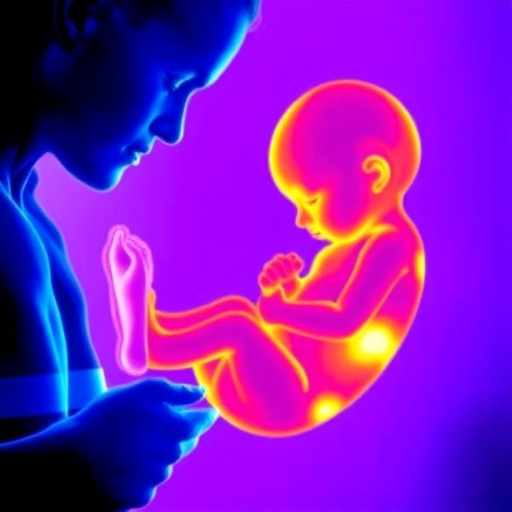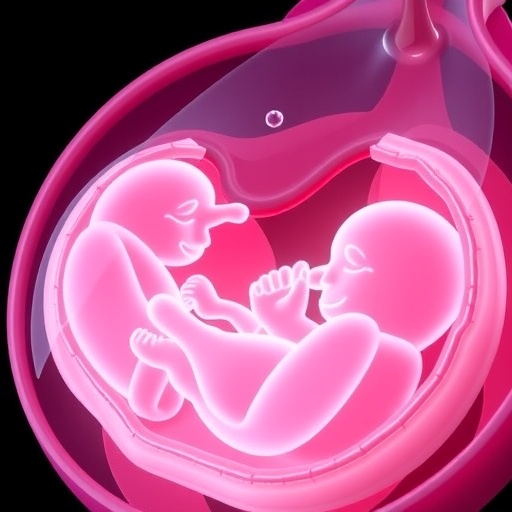In a groundbreaking development set to transform forensic anthropology and the practice of biological sex estimation, researchers have unveiled a revolutionary metric-based approach focused on the postcranial skeleton. This new methodology, developed and tested on an Italian population, promises unprecedented accuracy and a more comprehensive understanding of skeletal sexual dimorphism beyond the traditionally emphasized cranial features. The study, conducted by Morandini, Biehler-Gomez, Stull, and colleagues, represents a formidable leap forward in forensic and bioarchaeological sciences, highlighting subtle anatomical nuances that can decisively differentiate male and female skeletons.
One of the enduring challenges in forensic anthropology has been the reliable biological sex estimation of skeletal remains when cranial bones are missing, damaged, or poorly preserved. For decades, forensic experts have primarily relied on skull morphology and pelvic structures, which, while highly diagnostic, are vulnerable to taphonomic processes and post-mortem alterations. This novel study addresses the critical need for a more robust, metric-driven framework utilizing various postcranial elements – essentially the bones of the limbs, vertebrae, and girdles – to fill gaps in forensic identification and enhance skeletal analysis reliability.
The researchers applied rigorous quantitative techniques to a comprehensive sample of the Italian population, meticulously measuring a wide range of postcranial dimensions. By integrating advanced statistical models, including multivariate discriminant analysis, they were able to decipher patterns of sexual dimorphism with remarkable precision. Their results unveiled distinct morphometric signatures distinctly characteristic of males and females, significantly refining the predictive capability of forensic assessments in diverse contexts.
Central to the success of this approach is the recognition that sexual dimorphism manifests in subtle and complex ways across the entire skeleton, not solely in the cranium. The study carefully cataloged metric variables from the humerus, femur, tibia, clavicle, scapula, and vertebral bodies, among others, constructing a multidimensional dataset that better characterizes biological sex. This methodological shift allows for a more holistic biomechanical and morphological interpretation of skeletal remains, even in fragmentary or compromised conditions.
The implications for forensic practice are profound. In cases where skeletal remains are incomplete or subjected to environmental degradation, the ability to accurately estimate biological sex using postcranial metrics could lead to faster, more reliable identifications. This advancement is particularly vital in mass disaster victim identification, archaeological excavations, and medico-legal investigations where traditional cranial markers may be insufficient or unavailable.
Furthermore, the study’s statistical rigor sets new standards for population specificity in forensic anthropology. By tailoring metric analyses to the Italian population, the researchers underscore the importance of population-specific standards to account for genetic, environmental, and lifestyle influences on skeletal morphology. This approach diminishes the risk of erroneous sex estimations due to applying generalized models across diverse populations, thus enhancing forensic accuracy and cultural relevance.
Technically, the researchers employed cutting-edge morphometric techniques combined with machine learning classification algorithms which refined the discrimination power between male and female postcranial metrics. This integration of modern computational tools with classical anatomical knowledge epitomizes the future trajectory of bioanthropological research, bridging traditional principles with innovative data science methodologies.
The study findings also invite a re-examination of long-held anthropological assumptions about sexual dimorphism and skeletal plasticity. The detailed measurements reveal how skeletal robustness, cortical thickness, and bone length ratios vary systematically by sex, opening new avenues to understand biological diversity and adaptation at a granular anatomical level. Such insights have far-reaching consequences for evolutionary biology, forensic reconstruction, and even clinical anatomy.
In addition to its forensic utility, this metric-based postcranial approach offers valuable contributions to bioarchaeology by enabling sex estimation in ancient skeletal samples where crania are damaged or absent. It provides archaeologists with a more accessible and reliable toolkit to reconstruct past populations’ demographic profiles and thereby interpret cultural and social structures with enhanced fidelity.
This pioneering research was supported by meticulous data collection, ensuring the reproducibility and reliability of measurements through standardized protocols. This attention to methodological precision ensures that the framework can be adopted and adapted readily by forensic and anthropological laboratories worldwide, fostering greater collaboration and data sharing within the scientific community.
Moreover, the study’s comprehensive analysis helps dispel the myth that pelvic and cranial bones are indispensable for sex estimation, highlighting postcranial elements as vital and often underutilized anatomical markers. The implications for forensic casework are immense, especially in situations involving incomplete skeletal remains where conventional methods fall short.
The integration of these findings into forensic guidelines and protocols may soon become a reality, with training programs incorporating this novel metric approach. As the method becomes more widespread, forensic investigators will enjoy enhanced confidence in sex estimation outcomes, thus elevating the rigor and credibility of forensic evidence presented in courts and legal settings.
This transformative work signifies a paradigm shift in skeletal biology, championing a more comprehensive metric approach that synergizes multidisciplinary perspectives. It challenges practitioners to rethink the anatomical basis of sex estimation and embrace technological innovations that amplify the resolution of forensic analyses.
In a world where forensic identification is paramount to justice, disaster response, and historical understanding, this study represents a beacon of scientific progress. It underscores the vital intersection of anatomy, statistics, and computer science in solving some of humanity’s most complex forensic puzzles, paving the way for faster, fairer, and more accurate determinations of biological identity.
As forensic anthropology continues to evolve, it is expected that future research will expand upon these findings, incorporating larger and more diverse populations while refining the statistical models for even greater accuracy. The promise of postcranial metric analyses is not only to fill existing gaps but to redefine the standards for biological sex estimation universally.
This research is a striking example of how precision metrics and innovative methodologies can unlock new potentials hidden within the human skeleton. The scientific community eagerly anticipates the broader application and validation of this approach, heralding a new era of forensic expertise grounded in comprehensive skeletal metric analysis.
Subject of Research: Biological sex estimation using the postcranial skeleton in forensic anthropology
Article Title: Metric analysis of the postcranial skeleton: a comprehensive approach for biological sex estimation in an Italian population
Article References:
Morandini, P., Biehler-Gomez, L., Stull, K. et al. Metric analysis of the postcranial skeleton: a comprehensive approach for biological sex estimation in an Italian population. Int J Legal Med (2025). https://doi.org/10.1007/s00414-025-03599-8
Image Credits: AI Generated
Tags: anatomical nuances in skeletonsbioarchaeological advancementsbiological sex estimationforensic anthropologyforensic identification techniquesItalian population studymetric-based methodologypostcranial skeleton analysisquantitative techniques in anthropologyreliability in skeletal analysisskeletal sexual dimorphismtaphonomic processes in forensics





